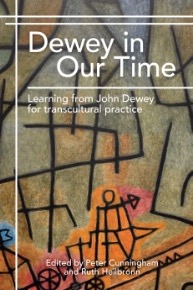education
Select an item by clicking its checkbox
In the previous blog in this series, we learned from Ramona Quimby’s kindergarten teacher, Miss Binney, that there is value to connecting with students. To writing them notes. To communicating that they matter in the classroom. To giving a shit. But sometimes we just have no shits left to ...
My road trips contain a heavy dose of Beverly Cleary audiobooks. Traipsing around the midwestern United States, my family of six fills the time by listening to the antics of Henry Huggins and Ramona Quimby read aloud by Neil Patrick Harris (quite frankly, it’s his very best work) and ...
Do not be conformed to this world, but be transformed by the renewing of your minds… Romans 12:2a (NRSV) Students are stressed today, and Omicron is not the only culprit. Twenty-four-hour access to social media and our preoccupation with it has proven to be both a blessing and a curse. ...
In Toward a Theory of Instruction, educator Jerome Bruner insists that a theory of development must be linked both to a theory of knowledge and to a theory of instruction, “or be doomed to triviality.” (Toward a Theory of Instruction, Jerome Bruner, Boston: Harvard University Press, 1974, 192 pages, ISBN 9780674897014, 21). I’ve ...

Dewey in Our Time: Learning from John Dewey for Transcultural Practice
Date Reviewed: August 11, 2017
Dewey in Our Time is a volume of collected essays that provides an overview of Deweyan scholarship since the original publication of John Dewey’s Democracy and Education in 1916. Recognizing the continuing influence of Dewey’s works, the Philosophy of Education Society of Great Britain and the History of Education Society, UK invited scholars of education, philosophy, history, educational policy, and cultural studies to contribute to this volume.
The volume is composed of an introduction and two main parts. In Part I, “Dewey in Changing Cultural Contexts,” the authors critically reinterpret Dewey’s wisdom and apply it to the educational contexts of Finland, Singapore, Spain, Japan, the UK, Australia, and the US. The diverse essays in this section engage with Dewey’s work on a philosophical level while also accounting for the histories that affect its reception in different national contexts. Taken together, the perspectives of authors from a variety of disciplines shed important light on the ways “science and epistemology, religion and politics” interact in the domain of education (3).
Part 2 is titled “Dewey, Pedagogy, and Practice in Our Time.” “Our time” here refers to the first decades of the twenty-first century, seen in relation to and even under the shadow of the past and future. Hence, Part 2 treats the world in which teachers and educators work, live, and research as a space in constant flux. Each contributor to this section discusses Dewey’s relevance to a particular challenge in contemporary education. The essays make connections between “educative experience and experimentation; experience and moral judgment; doubt, difficulty, and struggle; and … action research” (4). Part 2 concludes with a call to replace current models of “citizenship education” with Dewey’s “democratic education.”
The most valuable aspect of this book is the discussion of the wide range of Deweyan influences on contemporary education. For example, in Chapter 6, Javier Sáenz Obregón maintains that Dewey’s concept of educational experience has influenced contemporary education in terms of “self-reflection and self-creation” (96). Arguing that teachers, like students, are the “subjects of educational experience,” Obregón asserts that we must learn to apply to teachers the same aspirations we have for students (96). In particular, pedagogical practices should promote “inter-subjective transformation” for teachers and students alike (96). Andres English argues in Chapter 8 that Dewey’s concept of “struggle in learning” has influenced definitions of learning and of learning’s beginning point in contemporary education. Connecting Dewey’s concept of learning to historical and contemporary concepts of philosophical education (Plato, Rousseau, and J.F. Herbart), English distinguishes between productive and destructive forms of struggle and discusses how these conceptual distinctions can inform educational practice, based on the idea of the “in-between of learning” (129) – a condition of being beyond ignorance but not yet in possession of full knowledge. This condition is uncomfortable and difficult, but it offers rich possibilities for reflective thinking.
Overall, Dewey in Our Time successfully demonstrates Dewey’s ongoing legacy in educational practice, policy making, and curriculum development and illuminates the ongoing Dewey-inspired research on historical and philosophical education. Teachers and educators will greatly benefit from this volume when undertaking the daunting task of pedagogical reconstruction in the face of changing realities. Researchers will gain deeper insight into the historical and philosophical underpinnings behind educational practice.


